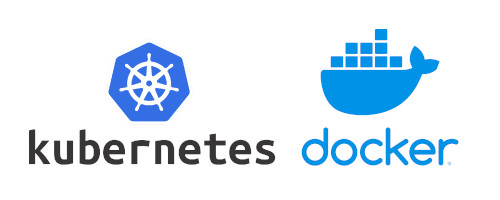In the world of DevOps, two buzzwords that frequently come up are Kubernetes and Docker. Both technologies have revolutionized the way applications are developed, deployed, and managed. While they are often used together, they serve different purposes and have distinct roles in the modern software development landscape.

Don’t forget to join my Discord: https://discord.gg/YbSYGsQYES
What is Docker?
Docker is a containerization platform that enables developers to package applications and their dependencies into isolated, lightweight containers. These containers can run consistently across different environments, such as development, testing, and production, ensuring that an application behaves the same way regardless of the underlying infrastructure. Docker simplifies software deployment, accelerates the development process, and enhances scalability and portability, making it a popular choice for DevOps and container orchestration technologies like Kubernetes. It revolutionized the way applications are built, shipped, and deployed by providing a standardized, efficient, and reliable method for containerization.
Key Docker Concepts:
- Images: Docker images are the building blocks of containers. They contain everything needed to run an application, including the code, runtime, system tools, and libraries.
- Containers: Containers are instances of Docker images. They run in isolated environments and provide a consistent runtime environment for applications.
- Docker Hub: Docker Hub is a repository where you can find and share Docker images. It’s a great resource for discovering pre-built images to use in your projects.
What is Kubernetes?
Kubernetes, often abbreviated as K8s, is an open-source container orchestration platform that automates the deployment, scaling, and management of containerized applications. It provides a robust framework for efficiently managing clusters of containers, abstracting away the complexities of container orchestration. Kubernetes allows users to define desired states for their applications and then automatically handles tasks such as load balancing, scaling, and recovery, ensuring that applications run reliably and consistently across different infrastructure environments. It has become a cornerstone of modern cloud-native and microservices architectures, offering features like automatic scaling, rolling updates, and self-healing, making it a vital tool for managing complex container-based applications at scale.
Key Kubernetes Concepts:
- Nodes: These are the servers (physical or virtual) where containers run. Kubernetes can manage clusters of nodes, ensuring high availability and scalability.
- Pods: The smallest deployable units in Kubernetes. Pods can contain one or more containers that share network and storage resources.
- ReplicaSets: A Kubernetes controller that ensures a specified number of pod replicas are running at all times. This aids in load balancing and fault tolerance.
- Services: Services expose pods to the network, allowing them to communicate with one another and ensuring consistent network access, even as pods are added or removed.
- Ingress: Ingress controllers manage external access to services within a cluster, routing traffic to the appropriate pods based on defined rules.
Key Differences between Docker and Kubernetes
- Scope and Purpose: Docker focuses on containerization, packaging, and isolation of applications. Kubernetes is all about orchestration and managing the deployment and scaling of containers.
- Single vs. Multi-Container: Docker typically deals with single containers and their images. Kubernetes manages multiple containers (pods) as a cohesive application unit.
- Abstraction Level: Docker abstracts the application and its dependencies into containers. Kubernetes abstracts the underlying infrastructure, including the management of containers.
- Use Case: Docker is essential for building and running containerized applications, while Kubernetes is crucial for deploying and managing these applications at scale, especially in production environments.
- Ecosystem: Docker has a vast ecosystem of tools, including Docker Compose for defining multi-container applications. Kubernetes has its ecosystem of tools for managing container orchestration, like Helm for packaging Kubernetes applications.
Conclusion
In the world of DevOps, understanding the difference between Kubernetes and Docker is crucial. Docker provides a convenient way to package and distribute applications, while Kubernetes excels at managing these containers at scale, ensuring high availability, load balancing, and seamless updates. Together, they form a powerful duo for modern application development and deployment. As you continue your journey in DevOps, mastering both Docker and Kubernetes will undoubtedly be a valuable asset in your skillset.
Don’t forget to join my Discord: https://discord.gg/YbSYGsQYES